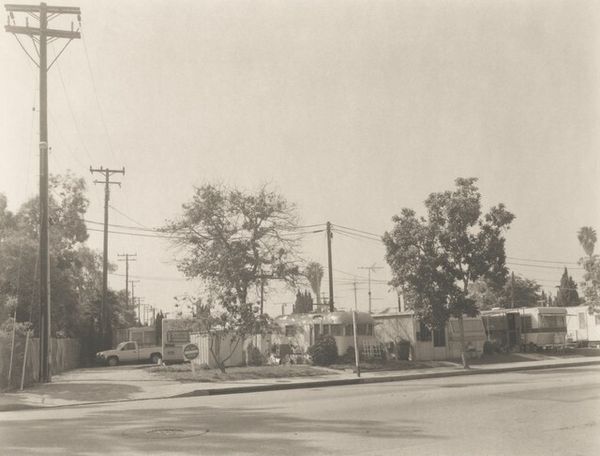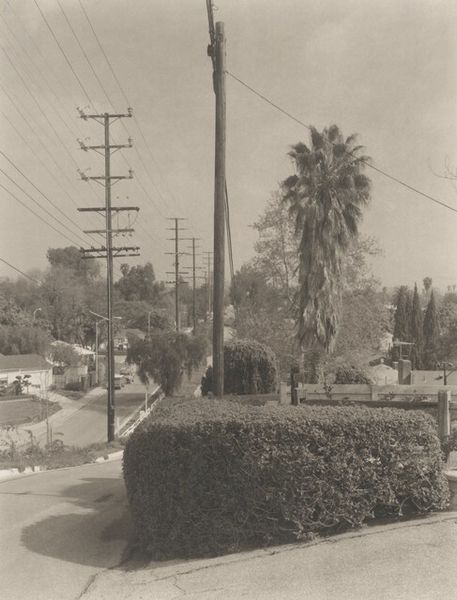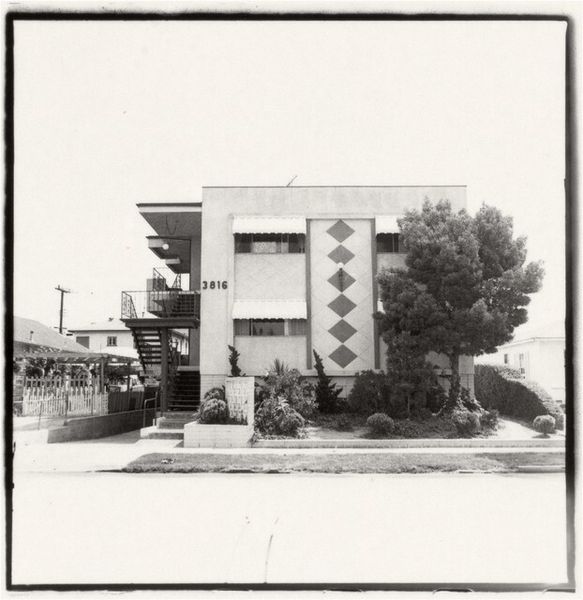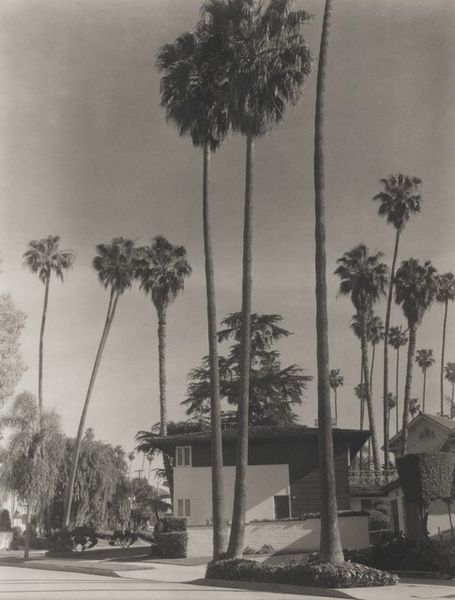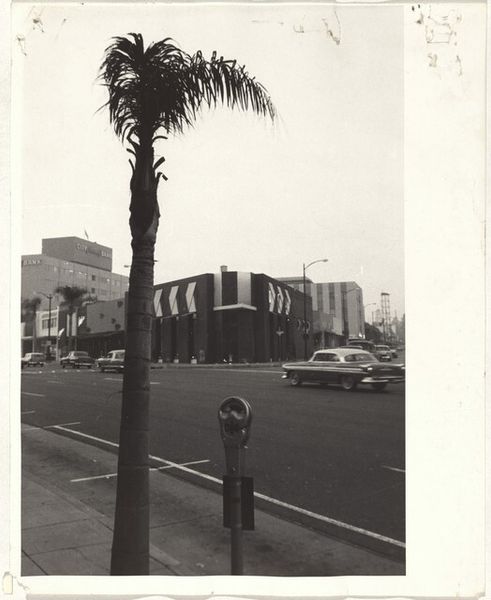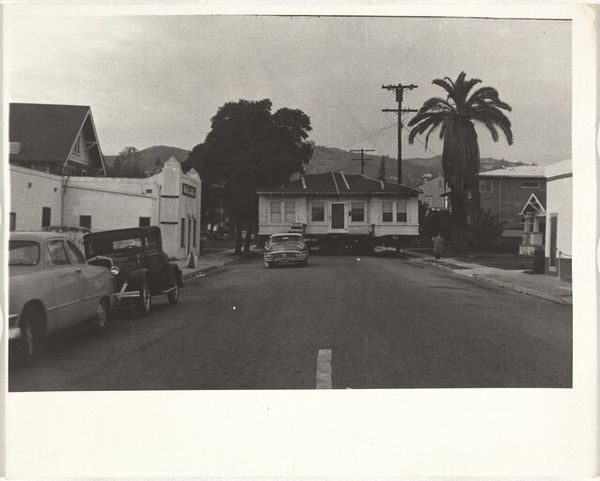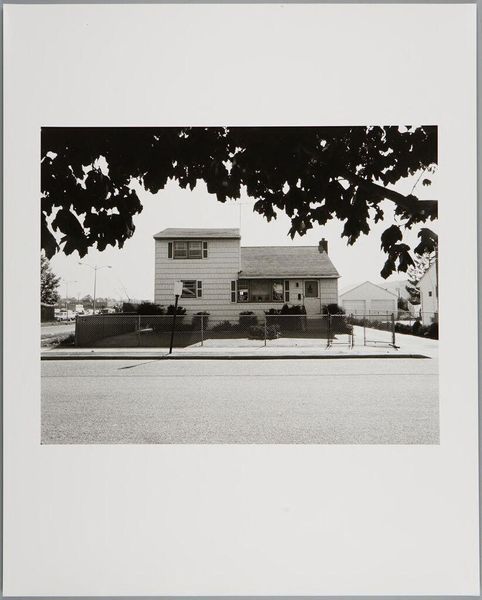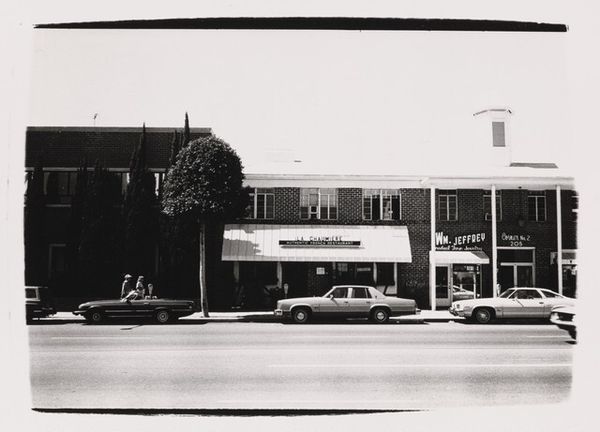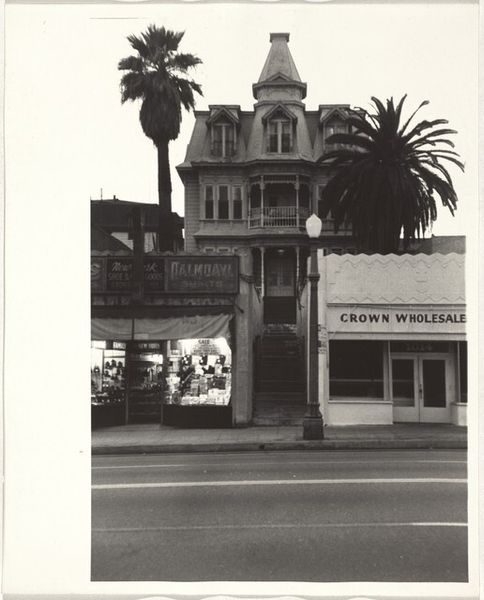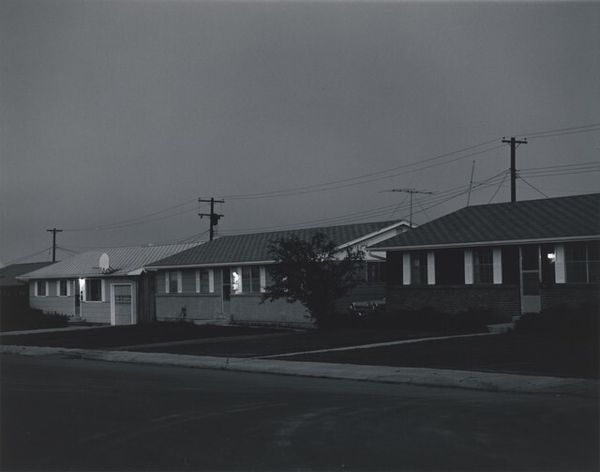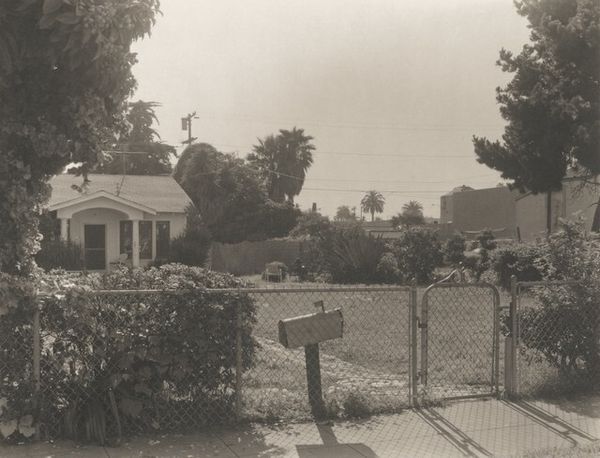
Dimensions: sheet: 25.2 x 20.3 cm (9 15/16 x 8 in.)
Copyright: National Gallery of Art: CC0 1.0
Curator: The gelatin-silver print we're looking at is Robert Frank's "Billboards--Los Angeles," taken in 1956. It’s part of his pivotal work, *The Americans*. Editor: It strikes me as rather bleak. The composition is dominated by stark utility poles and billboards against a rather nondescript sky. It gives a sense of urban alienation. Curator: Indeed. Consider Frank's position as an outsider, a Swiss immigrant, encountering postwar American consumer culture. The image implicates how billboards, and visual media, function to sell particular myths. Look closer. One billboard features a pitch for Forest Lawn Memorial Park—eternal comfort and capitalist ambition literally stacked one upon another. Editor: And juxtaposed to that is "Now Renting," as well as a series of power lines that appear chaotic yet deliberately made of wood, so as to be naturalized in the scenery, as are the ubiquitous California palm trees. This suggests the transience and commodification of life itself. The means of commercial "production" are all laid bare. Curator: Absolutely. These photographs aren’t merely documentation. Frank challenges the mythologies perpetuated in the American media through a particular gaze and artistic process. His printing techniques, coupled with his intentionality, pushed the photographic medium towards an understanding that it wasn't meant to serve any established order. The final work defies a clean, optimistic view, but one layered with complexity. Editor: The graininess of the gelatin silver and stark contrast heighten the visual impact and almost feel subversive, resisting the slick, commercial imagery the billboards aim for. The perspective suggests a casual snapshot but the composition and printing point to an artistic choice and manipulation of documentary material. I imagine these billboards themselves were being produced industrially. How were Frank's works viewed in comparison? Curator: Initially controversial! Frank was criticized for his unconventional approach, and the seeming cynicism toward the ‘American Dream.’ Later, it would become recognized for it's pivotal disruption. Ultimately, a poignant reflection on post-war society. Editor: Looking at this, one is left thinking about the construction and consumption of national identity itself. Thanks to this conversation, I view Frank’s image quite differently than my initial somber assessment.
Comments
No comments
Be the first to comment and join the conversation on the ultimate creative platform.
